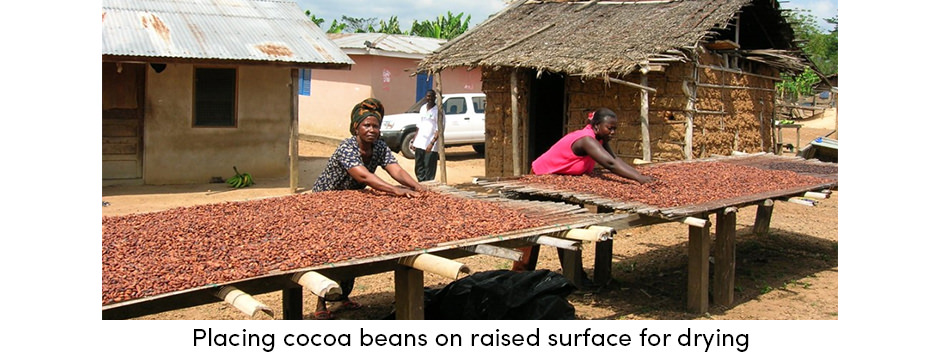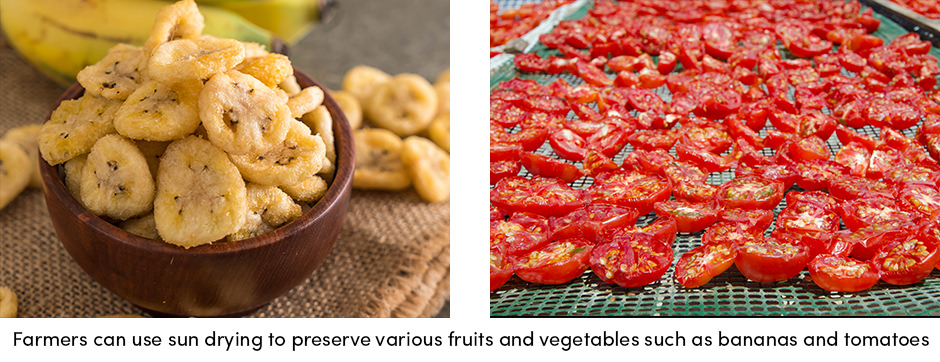Preserving the crops is just as important as growing crops. For this purpose, farmers use various post-harvest practices that protect harvested crops from spoilage and decay. One of these practices is drying. Since every harvested crop contains a certain amount of water (known as a “moisture content”), the main purpose of drying is to reduce the crop moisture content to a level that is safe for storage. There are many ways how a farmer can manage drying. However, the oldest and definitely one of the simplest drying methods is sun drying.
Sun drying is a traditional post-harvest practice that includes exposing the crops to the effects of sun and wind. The practice is usually managed by spreading the crops on the ground. Besides that, sun drying also includes spreading the crops in shade, as well as on raised surfaces (for instance panels that are placed on blocks). By placing the crop on a raised surface, a farmer can ensure better air circulation, and therefore improve the drying process
Sun drying is usually used in post-harvest management of grains. However, many fruit and vegetable farmers also use sun drying in order to maximize storage life of various crops such as plums, peaches, bananas, tomatoes, and potatoes.
Traditional but Very Popular Practice
On one hand, sun drying is an outdated post-harvest practice. Today, there are many improved ways of managing drying such as aeration, heated air drying, dryeration, and in-storage cooling. Still, sun drying is one of the most practiced drying methods.
The main reason for that is because sun drying is a low-cost method that is affordable to every farmer. Another important aspect to consider is that worldwide, there are over 500 million of family farmers. This particularly refers to smallholder farmers with poor access to production resources and farm technologies.
One more remarkable advantage of sun drying is that the practice is completely natural and environmentally friendly. That way, farmers who are completely devoted to sustainability usually practice this drying method.
A Practice Faced with Many Limitations
Despite its popularity, sun drying is often criticized due to its limitations, such as:
- Directly depends on weather conditions; for this reason, sun drying can’t be practiced during the night or rain; the practice is also not recommended in humid areas
- High potential losses due to rodents, birds, insect pests, and diseases
- Low efficiency; slow and labor-intensive method of drying
- Questionable crop quality; the difference in temperatures and humidity during the day and night may affect the final success of drying; too long exposure to high temperatures may also be harmful to some crops
How to Manage Sun Drying Properly?
In order to improve the efficiency of sun drying, farmers should focus on three important things:
1. Farmers aiming towards uniform drying should take care that the products are properly stirred.
2. It’s recommended to turn the products as often as possible.
3. Regular monitoring and on-time reaction that will protect the products from unfavorable weather and other threats.
Dealing with crop moisture, in order to preserve storage life and crop quality, can be managed in a few ways. While choosing the optimal drying method, farmers usually compare costs and final efficiency.
Sun drying is definitely not the best method for managing crop moisture. Still, there is one thing that makes sun drying a valuable farm practice: every farmer can afford to use it. Exactly because of that, sun drying will probably remain as one of the most popular drying methods for a long period of time.
Text sources: FAO || FAO – Family farming
Image sources: Body.ba









